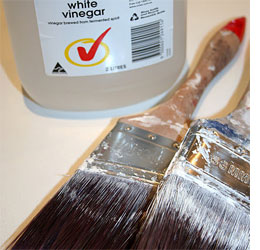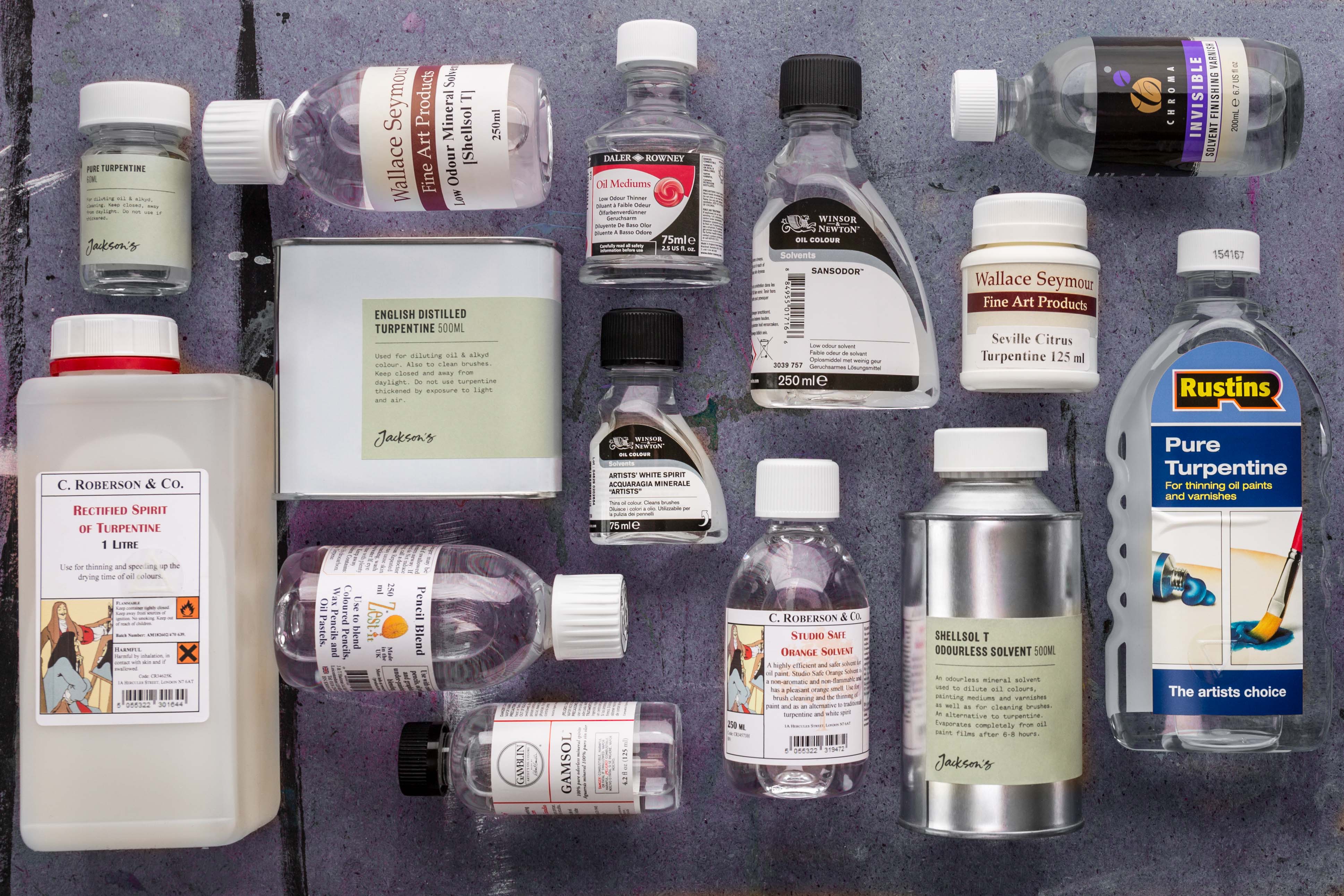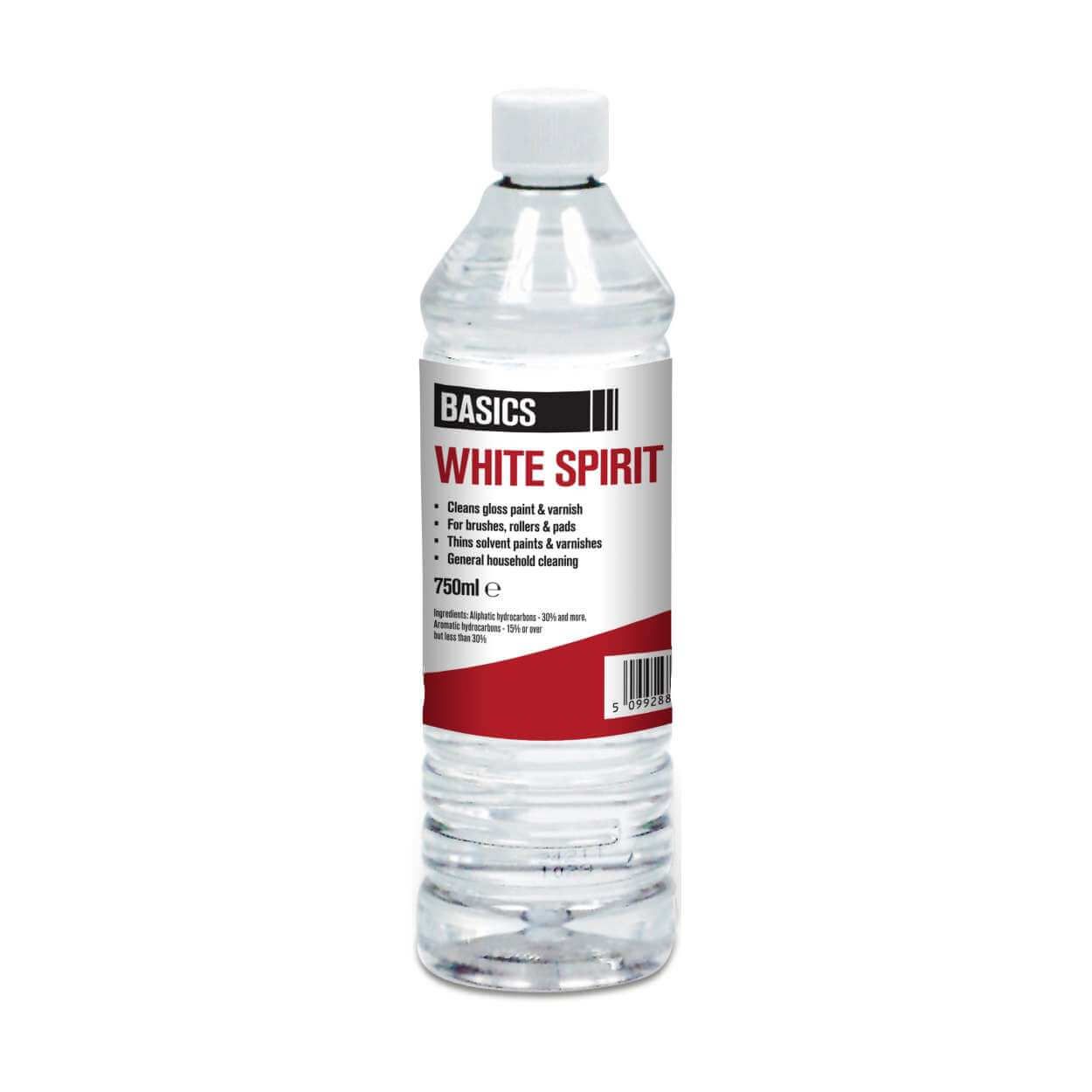Follow these simple steps to properly clean paint brushes after your next do-it-yourself project.
Photo: istockphoto.com
Make your own window and glass cleaner by mixing half methylated spirits and half water. It can remove build-up that everyday cleaners can’t. It’s hard to remove paint from your brushes with just warm soapy water. Instead, just place the brushes in methylated spirits for a few hours and then rinse.
An investment in high-quality paint brushes is wasted if they are not properly cleaned and stored after use. Indeed, rushing through the end of a paint job can leave you with flecks of paint in your brushes—which will lead to an imperfect finish on your next project—as well as misshapen bristles. So invest the extra two minutes it takes to do the job right and follow this guide on how to clean paint brushes.
Pour vinegar into your pot. If you don't want to use a pot from your kitchen, pick one up just for paint brushes at your local thrift store. Place your brush into the pot of vinegar. All of the paint covered areas of your brush should be covered with vinegar. Refresh the jar if necessary and work the brush around again (use a fresh jar of white spirit if needed) until the brush is clean. Remove and rinse the brushes under the tap. Dry with a clean cloth and store. DON’T pour the left over white spirit down the sink. Leave it in the jar and allow the paint to settle in the bottom. Buy White Spirit Paint Brush Cleaners at Screwfix.com. Delivery 7 days a week. Choose from top trade brands. 1 trade catalogue. Buy online & collect in hundreds of stores in as little as 1 minute!

MATERIALS AND TOOLS Available on Amazon
– Newspapers
– Mineral spirits
– Turpentine
– Mild liquid dish soap
– Small plastic buckets
– Paint brush and roller spinner
– Rags
The Right Way to Clean Paint Brushes
Photo: istockphoto.com
- Use up what paint remains on your brush on whatever you are painting.
Press the bristles against the inside of the paint can, and lift it up and out as you do—that will squeeze out more paint. Paint away the rest on newspapers, because cleaning a brush is made easier if you remove as much of the paint from its bristles as possible. - Next, examine the can of paint, and use the appropriate solvent.
The right solvent makes the job easy by loosening dried paint, but the wrong one will probably be no help at all. Fill a small bucket with one of the following depending on the type of paint you’ve used:- Mineral spirits or turpentine to remove oil-based paint
- Hot water and mild liquid dish soap to clean paint brushes that have been used to apply latex paint
- Immerse the paint brush in the solvent.
Stir the solvent with the brush for about 10 seconds, wiping and squeezing the bristles on the sides of the container. Work the bristles between your fingers, and run a brush comb through them to remove excess paint without damaging the bristles. If some of the paint has begun to dry on the brush, soaking the brush may be necessary. - Wash it in warm soapy water in a utility sink or bucket.
Once the paint has been removed from the brush, warm soapy water will clean the brush of the solvent and remaining paint. - Shake or spin the paintbrushes dry.
Before you store your paint brushes, you’ll want to remove all of the water from their bristles. Many DIYers will do so by shaking the brush at the top of a bucket and then blotting the brush dry with a clean rag or newspaper.But, for those that have plans to do a lot of painting and wish to preserve their tools, a brush and roller spinner will come in handy. This dual-purpose tool will speed-dry either type of paint applicators using centrifugal force. Just attach a paint brush to the bottom of the tool, then pump the top several times to spin it and fling all water off the business end of the brush.
- When storing paint brushes, hang them up or lay them flat.
Hanging paint tools from a pegboard in your workshop or craft room is not only a great organizational method, but it ensures that the brush’s bristles don’t get bent out of shape stuffed in a bin somewhere. Replace the packaging on your paint brush to maintain its form and prolong its useful lifespan.

Photo: istockphoto.com
Everyartist should know not only why Richard Of York Gave Battle In Vain, but also how to clean his oil paint brushes. If you don’t clean your paint brushes,you risk losing them as a tool forever! To prevent this, let’s think aboutdifferent ways to clean brushes.
First ofall, let’s see what oil paint is.There is already a hint in the name – this is a color pigment diluted in oil(often in linseed); we omit all other additives (wax, glycerin, etc.), becausewe will talk about cleaning brushes ofoil paint and oil as its main component. The oil paint brushes should becleaned based on this knowledge and rules.
As oil is afat, then we can clean it with a “degreaser” accordingly.
Video “how to clean brushes” (in Russian)
Ways to clean oil paint brushes:
Cleaning brushes with thinner
You use it many times during painting, dipping the brush into the oil can with a solvent in order to take another clean paint color. This is a simple and quick way to remove all the paint from the brush pile.
What thinner should be used to clean the brushes? You can take any thinner No. 1, No. 2, No. 3 or No. 4, because all of them are suitable for cleaning brushes. But the best choice is pure white spirit, it is considered less toxic.

Instructions:
You will need a cloth to wipe the brush. Before starting to clean the brush with thinner, squeeze the paint brush between the piece of cloth and remove any remaining paint. After that, feel free to dip the brush pile into the thinner and immediately repeat the previous step. Repeat several times until the brush is completely clean.
The thinner can be used to clean both natural (bristles, for sable pile it is better to choose more gentle methods of cleaning) and synthetic brushes.
There is an article about thinners and solvents “Choosing an Oil Painting Thinner”
How to clean the oil paint brush with laundry detergent or dish soap?
Here the chemistry can help us, because laundry detergent or dish soap is excellent at removing the fat. You’ve seen this “trick” with clothes and dishes after fat food, when not a single spot remains after washing. In this case, any laundry detergent or dish soap is suitable.
Instructions:
- Dish soap. Before proceeding, do not forget to wipe the brush with a piece of cloth as in the previous method. The remaining paint should be removed before cleaning the brushes. Pour a little bit of dish soap into the palm of your hand, dip the brush into this “puddle” and whip it with circular movements. After such actions, the brush is cleaned of the paint. Rinse the foam from the brush under water, and if it is not clean enough, repeat these steps.
- When you use laundry detergent, it is better to clean the paint brushes in a slightly different way. Take a container (for example, a jar), make a strong solution of laundry detergent in warm water. Bathe your brushes properly in this strong solution, periodically rinsing them under water and wiping them with a piece of cloth.
Is it possible to clean oil paint brushes with gasoline or kerosene?
In short, yes. But as always there is one flaw, and in terms of gasoline and kerosene it is big. This is toxicity … the gasoline toxicity is harmful to brushes, skin of your hands and to your breath. I advise you to think carefully before using this method for cleaning oil paint brushes.
Instructions:
Quickly dip the brush into gasoline/kerosene, and then wipe it with a piece of cloth. Washing off the paint is quick and easy.

Can I use soap to clean brushes? Yes, of course.
It is probably the most common method for cleaning brushes. Soap, after all, easily removes the fat from your hands (natural or artificial oils). Absolutely any solid soap is suitable. For whoever is wondering, the less dye and different flavors in the soap, the more natural it is, but I think this can be omitted. Our main task is to clean the brushes.
How Do You Clean Paint Brushes With White Spirit

Instructions:
Take the soap in one hand and brush in the other hand, moisten it and soap under water. Clean the brush in circular movements, moving the brush over the soap surface until the foam formation. During this, the paint is washed from the brush pile. Rinse the brush under water and repeat until the brush is completely clean.
In art stores, you can find cleaningsoap for brushes.
Brush washer for cleaning brushes
The brush washer is a funny thing, being a container and a spring above it. You can pour thinner into the container and fix the brushes so that the pile is dipped into it. After cleaning, you can use the brush washer to store the brushes, replacing the thinner with oil (even the sunflower oil) and lowering the brush tips into the oil. You will know that they are completely safe.
Tips For Cleaning Paint Brushes
Some artists, often novice artists, put the brush in the water not being sure that the brush is clean. It’s quite reasonable, as the water does not let air in and does not allow the brush to dry. And the brush itself can be damaged, as it is better to store brushes in a vertical position and pile up.
Cleaning Paint Brushes With White Spirit Rock
Clean the paint brushes properly, and we will discuss their preservation in another article.
Clean brush is the key to quality of your work.
I wish you success and creative heights!
